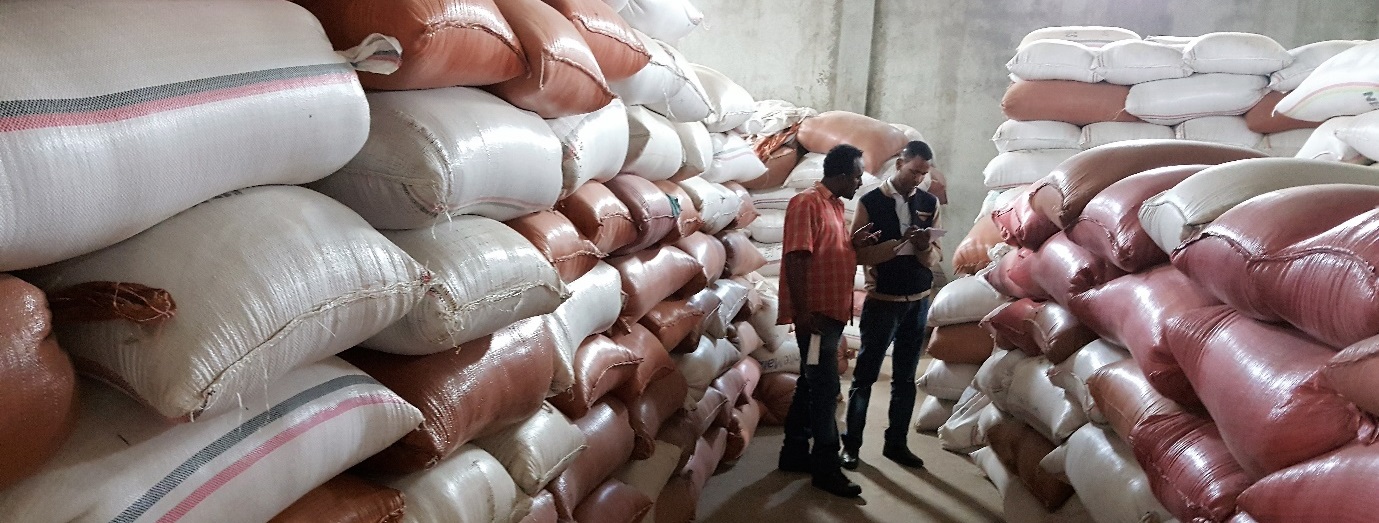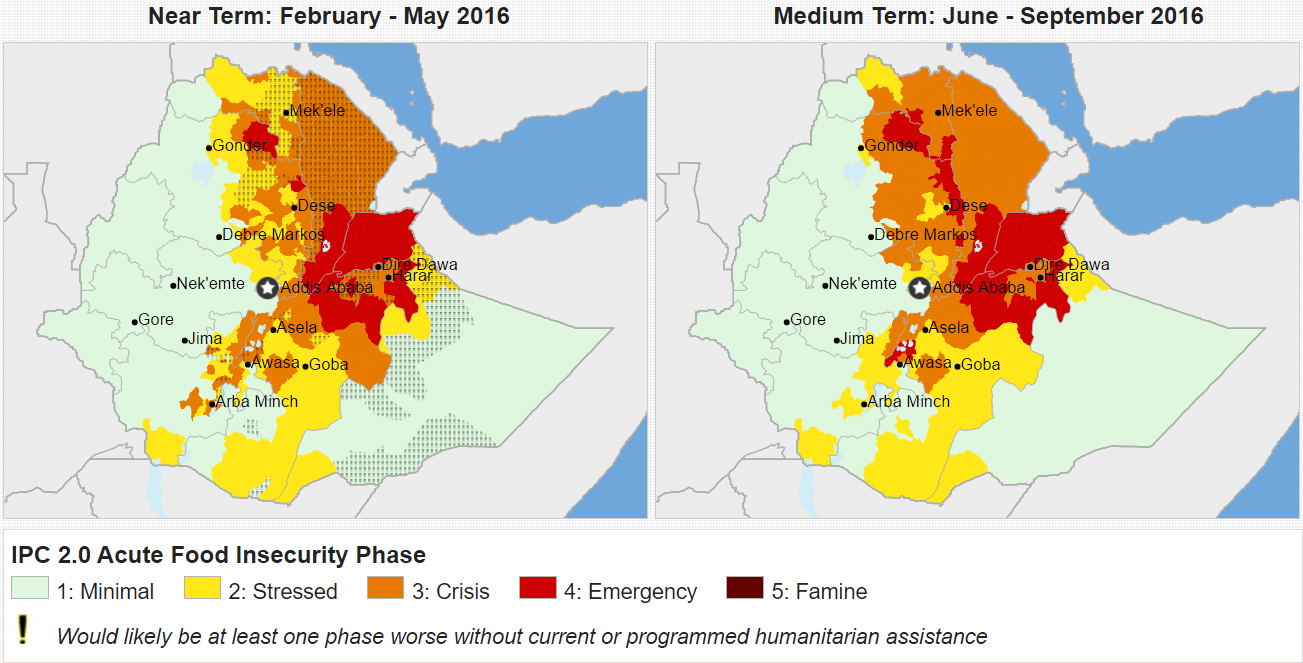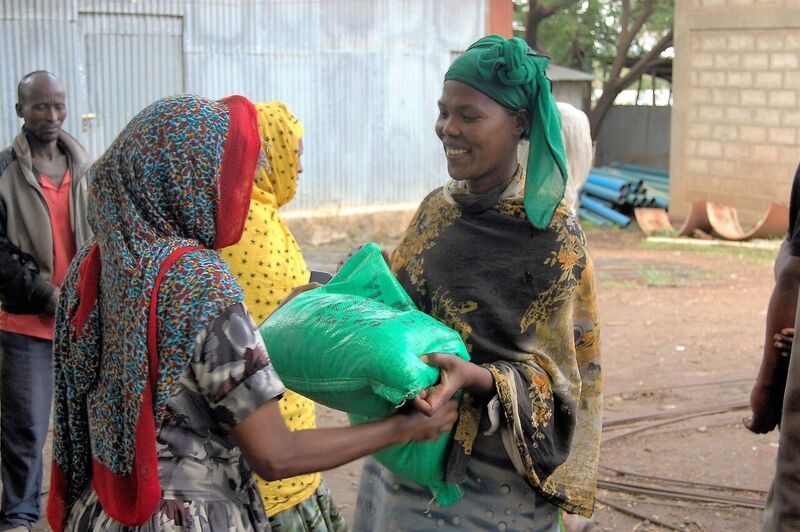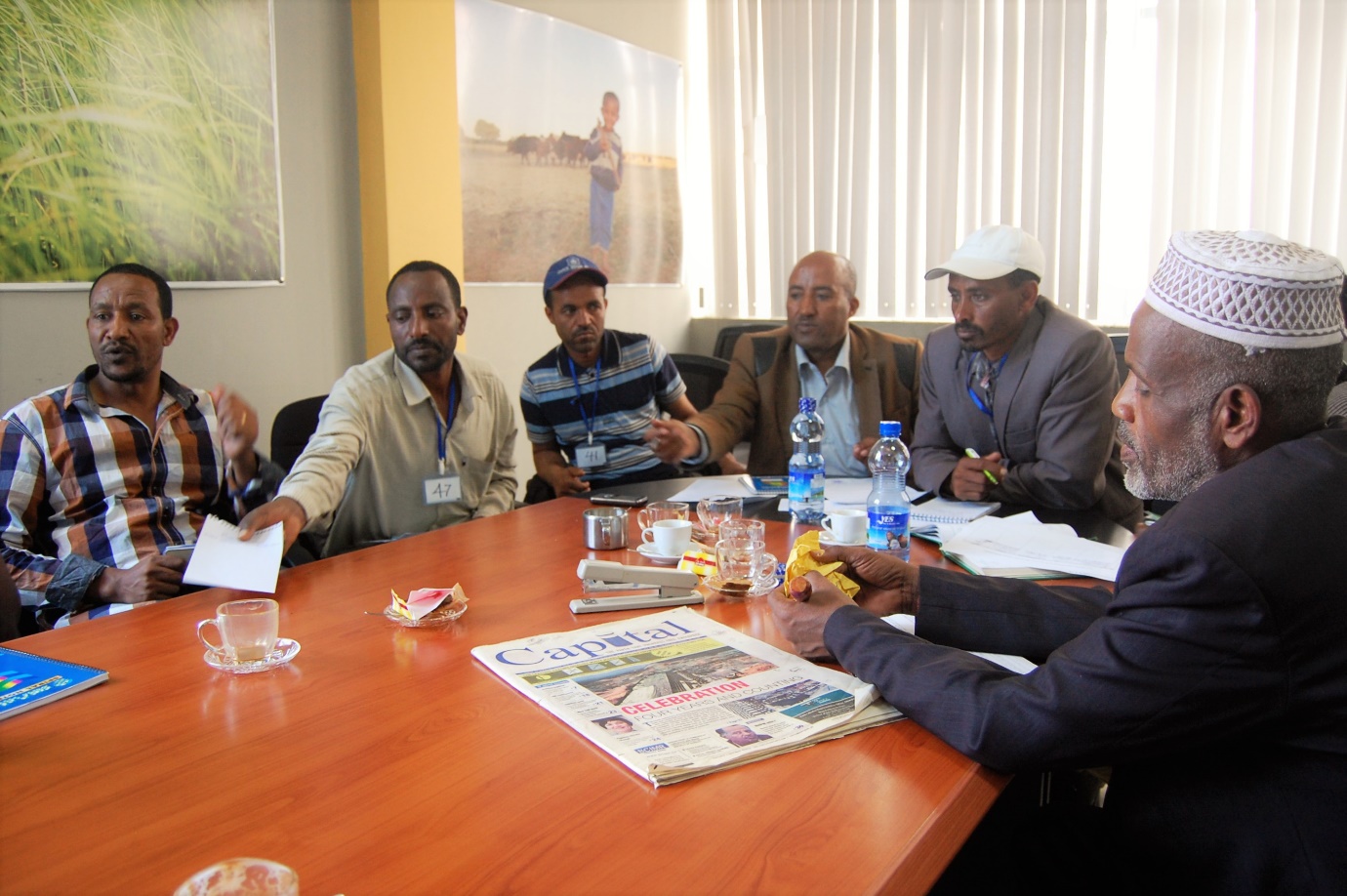
As the Rio 2016 Olympics draw near, team managers are rushing to recruit their best sportspeople from all over the country, put them through fitness tests, and get them to various stadiums before the starter’s gun goes off.
The team working on the Emergency Seed Support for Drought Affected Maize and Wheat Growing Areas of Ethiopia initiative is facing a similar challenge. But instead of recruiting long jumpers and marathon runners, they are tasked with procuring quality seeds of elite maize, wheat, and sorghum varieties and distributing them to farmers before the start of the main planting season to increase food security in regions devastated by recent droughts.
Dry conditions are not uncommon in Ethiopia, but the 2015-2016 El Niño – the strongest on record – has led to the worst drought in a decade. Harvests across Ethiopia were affected, leaving 10.2 million people – more than 1 in 10 Ethiopians – in need of emergency food assistance.

Planning for a food-secure future
The government of Ethiopia and international organizations are working to provide food aid for people facing immediate shortages, but Bekele Abeyo, senior wheat breeder and pathologist at the International Maize and Wheat Improvement Center (CIMMYT) for sub-Saharan Africa and leader of the emergency seed project, is focusing on a more sustainable future.
“Relief efforts will provide sustenance today, but we need to ensure there is also food on plates tomorrow,” says Abeyo. “With the large crop losses experienced in 2015, farmers were not able to save seed for planting in 2016 and did not have sufficient income to purchase more. Unless these farmers are able to access seed, we may face further shortages in 2017.”
CIMMYT, with support from the U.S. Agency for International Development, is working with partners to supply over 2,700 tons of seed to more than 226,000 households across 71 woredas (districts) in four regions of Ethiopia. CIMMYT will work with both the formal seed sector and farmers’ cooperatives to source quality seed from within Ethiopia and make sure it reaches the farmers who need it the most. These high-yielding, drought resistant varieties are being supplied along with agronomic advice to further increase farmers’ resilience.
Together with Ethiopia’s Agricultural Transformation Agency (ATA), a primary partner in the project, CIMMYT organized workshops in each of the target regions –Amara, Oromia, Southern Nations, Nationalities, and People’s Region (SNNPR), and Tigray – to engage stakeholders and collectively finalize the workplan. Based on participant feedback, some sorghum will now also be supplied to selected regions, in addition to maize and wheat.
“It is important to consider the needs of the individual communities and regions,” says Yitbarek Semeane, director of ATA’s Seed Systems. “ATA has very strong links with the regions and government institutions so is able to provide feedback on farmers’ needs and preferences. As weather patterns in Ethiopia are becoming increasingly unpredictable, many farmers are changing their farming practices, or even switching crops.”

A race against time
With the main planting season rapidly approaching, the team is racing to source, procure, certify, transport and distribute seeds.
“The success of this project will depend on us procuring enough quality seed and distributing it to farmers before the main planting season,” says Tadele Asfaw, CIMMYT-Ethiopia program management officer and member of the project’s Seed Procurement Committee.
By mid-April, the team had successfully procured almost all the required maize and sorghum seeds and were navigating the complex logistics to get the requested varieties to each woreda. Agreements are also being signed with farmers’ cooperatives to ensure that wheat seed can be purchased without disrupting the normal seed system.
According to Ayele Badebo, CIMMYT scientist and wheat seed coordinator for the project, CIMMYT does not have the capacity to collect seed from individual farmers within each woreda, but this is something the cooperatives are ideally placed to do. They have the trust of both CIMMYT and farmers, and through the previous seed scaling project, they know which farmers were given seed to multiply and will now have it available for sale.
At the end of March, the seed procurement team traveled to eastern Oromia – one of the areas most affected by the 2015 drought – to meet with Chercher oda bultum, a farmers’ cooperative and seed supplier. The team was very satisfied to see that the supplier had sufficient stock of Melkassa2 and Melkassa4, locally-adapted drought resistant maize varieties that had already been certified for germination and moisture by another collaborator, Haramaya University. This same process is now underway for wheat seed.
Ethiopia’s Bureaus of Agriculture and Natural Resources are also working with woreda representatives to ensure that the seed will be distributed to those farmers who need it most, and who have sufficient land and agronomic tools to benefit from this initiative.
“Working with local enterprises and partners enables us to procure and deliver seed to drought-affected farmers as quickly as possible,” says Abeyo. “In combination with CIMMYT’s longer-term efforts in the region, we hope that we can foster a more robust seed system and increase food security for 2016 and beyond.”

Partnering for success
While CIMMYT has the knowledge, networks and experience in Ethiopia to spring into action, the cooperation of partners such as the Agricultural Transformation Agency (ATA), farmers’ unions and Ethiopia’s Bureaus of Agriculture and Natural Resources is vital.
Established in 2010, the ATA is acting as a catalyst to spur the growth and transformation of Ethiopia’s agriculture sector. With funding from the Bill & Melinda Gates Foundation, ATA is working with the Ministry and Regional Bureaus of Agriculture and Natural Resources to coordinate the collection, cleaning, packing, labeling and distribution of quality seed to drought-affected farmers, as well as help train development agents and raise farmer awareness.
 Climate adaptation and mitigation
Climate adaptation and mitigation 
